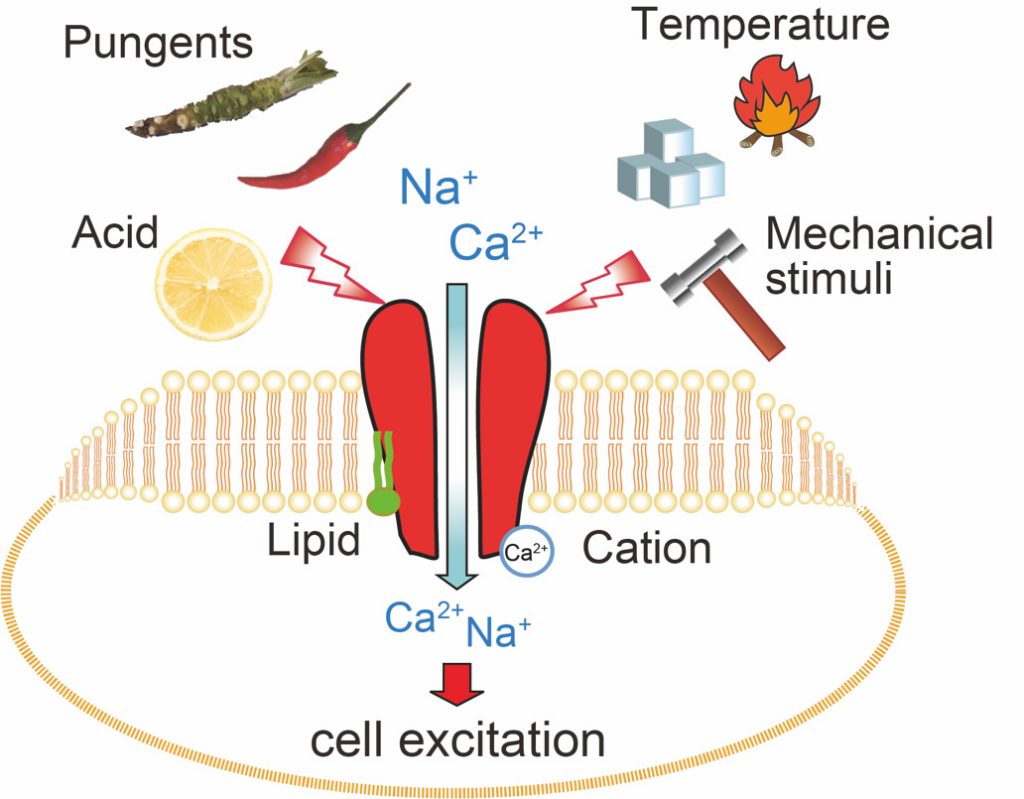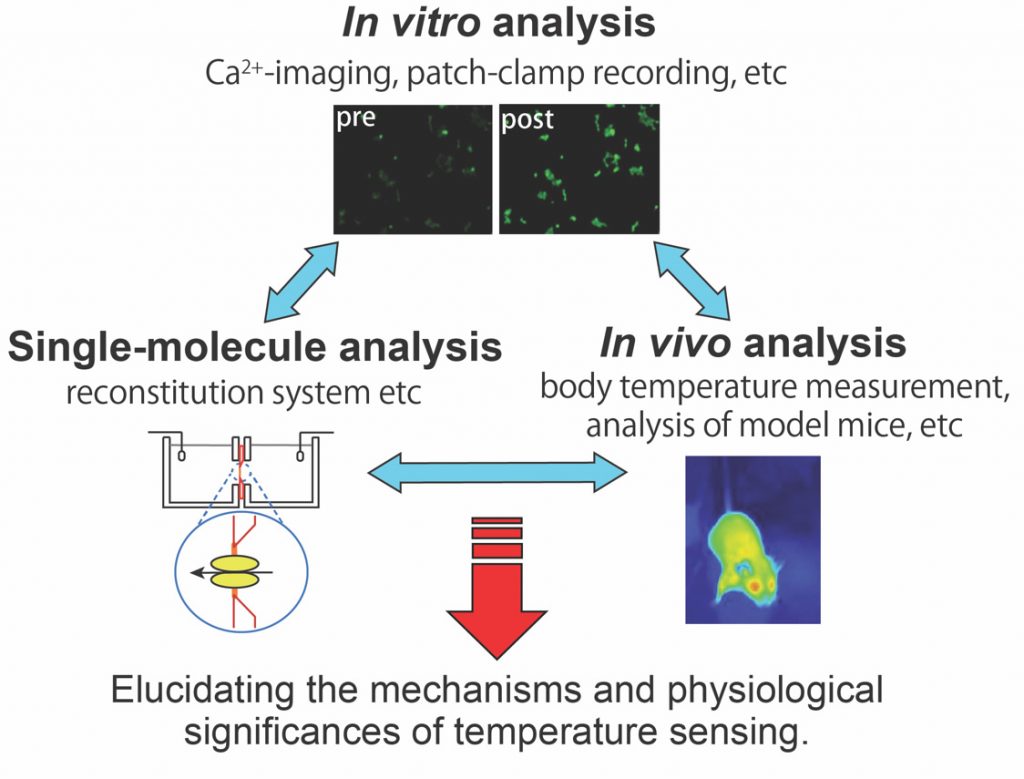Functional Physiology

- account_circleKunitoshi UchidaPhD, Assoc. Prof.
- account_circleMari IwasePhD, Research Asst. Prof.
- Website:https://dfns.u-shizuoka-ken.ac.jp/labs/fphysiol/
- Mail:kuchida@u-shizuoka-ken.ac.jp
- Phone:+81-54-264-5787
Elucidating the physiological significance of thermosensation
Physiological and pathological roles of thermosensitive ion channels
- 1. The mechanisms by which cells sense temperatures
To understand the mechanisms by which the thermoreceptors detect temperature changes and convert them into electrical signals, we use an in vitro reconstruction system. We study thermoreceptors using patch-clamp electrophysiology of cultured cells, and bilayer lipid membrane methods consisting of only purified sensor molecules, lipids, and electrolytes.
- 2. Involvement of thermosensitive ion channels in energy metabolism
Among the cells involved in metabolism, we focus on brown adipocytes (residing in brown adipose tissue) and beige adipocytes (residing in white adipose tissue, and are induced by cold exposure) that produce heat and expend the energy. We investigate the roles of thermoreceptors in brown and beige adipocytes and the involvement of these cells in metabolic syndromes by using cultured cells and mouse models.
- 3. Search for ligands that act on thermoreceptors and the study of their application for preventing and treating pathological conditions
Since thermoreceptors are activated by many substances such as capsaicin, the pungent compound in hot peppers (Figure 1), we search for substances from foods and pharmaceuticals that act on thermoreceptors, using fluorescence imaging and patch-clamp methods. We also investigate the effects of these substances on pathological mouse models, including those of metabolic disease and chronic pain.
- Figure 1
- Thermosensitive transient receptor potential (TRP) channels

- Figure 2
- Research goal and strategies

References
- Biosci. Biotechnol. Biochem., 84, 2121-2127 (2020)
- J. Physiol. Sci., 69, 305-316 (2019)
- J. Physiol. Sci., 67, 549–560 (2017)
- EMBO Rep., 17, 383-399 (2016)
- FASEB J., 30, 1306-1316 (2016)
- J. Biol. Chem., 288, 25950-25955 (2013)
- Chem. Senses, 37, 809-818 (2012)
- Diabetes, 60, 119-126 (2011)